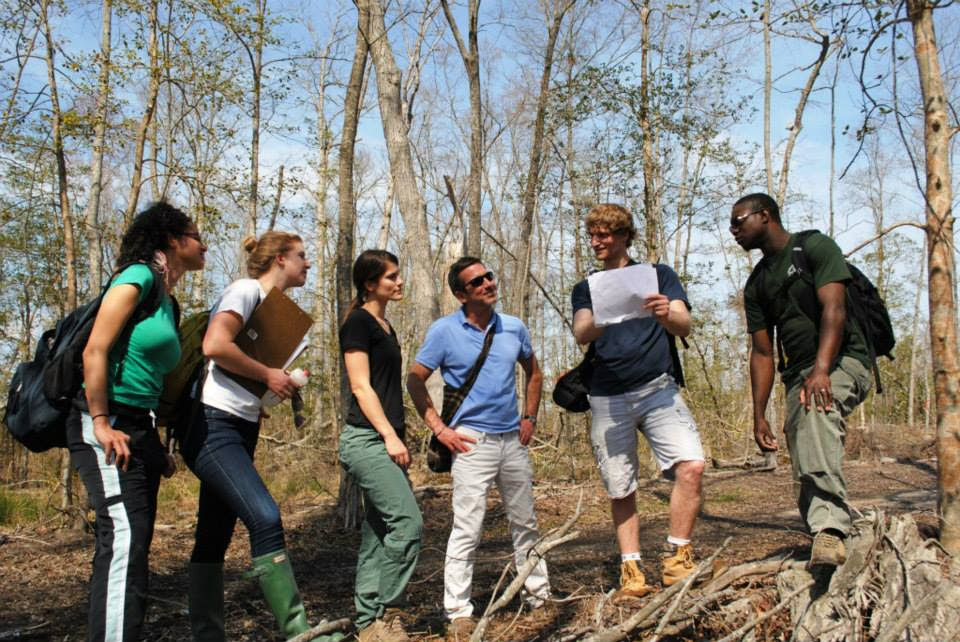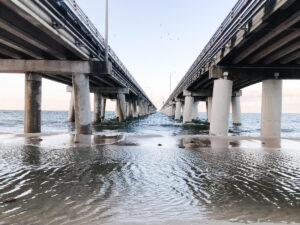Image Caption: heading 5, italicized
Author
 A quick look at the titles of federal legislation enacted in 2022 might suggest that the Inflation Reduction Act (IRA) deals primarily with the price of gas and groceries. But there is great news. In addition to major commitments to clean energy, climate action, sustainable agriculture, and equity, the IRA includes billions of dollars of funding for land conservation that partners here in the Chesapeake Bay Watershed can use to accelerate progress towards 30×30.
A quick look at the titles of federal legislation enacted in 2022 might suggest that the Inflation Reduction Act (IRA) deals primarily with the price of gas and groceries. But there is great news. In addition to major commitments to clean energy, climate action, sustainable agriculture, and equity, the IRA includes billions of dollars of funding for land conservation that partners here in the Chesapeake Bay Watershed can use to accelerate progress towards 30×30.
In December of 2022, the administration released a 180-page program-by-program overview of who is eligible to apply for funding and for what purposes. Many of the programs funded by the IRA involve tax incentives or direct federal spending for projects on federal lands, such as $500 million for conservation, protection, resiliency, and ecosystem restoration projects on lands administered by the Bureau of Land Management and the National Park Service. Several others provide grants to state and local governments, tribes, and nonprofit organizations to support protection activities on state and private lands. In most cases, the IRA provides funding for existing programs, but a few are new.
Here are highlights of additional grant funding from the Inflation Reduction Act that might help support progress toward conservation goals for our region:
 Agricultural Conservation
Agricultural Conservation
U.S. Department of Agriculture, Natural Resources Conservation Service
Agricultural Conservation Easement Program (ACEP)
$1,400,000,000 to help landowners, land trusts, and other entities protect, restore, and enhance wetlands or protect working farms and ranches through conservation easements.
Eligible Recipients: Conservation entities, agriculture producers, farmers, ranchers, and forest landowners
Cost Share Requirements: Varies
Regional Conservation Partnership Program (RCPP)
$4,950,000,000 for Cooperative Agreements, Grants, Contracts including a range of on-the-ground conservation activities such as land management, improvement, and restoration practices; land rentals; and entity-held and U.S.-held easements.
Eligible Recipients: Native American organizations, farmer/rancher/agriculture producer, land/property owner, state/local sponsored organization, federally recognized tribal governments; landowner, landlord, operator, or tenant of eligible agricultural lands or non-industrial forestlands.
Eligible Uses: RCPP projects may include a range of on-the-ground conservation activities implemented by farmers, ranchers, and forest landowners such as land management, improvement, and restoration practices; land rentals; and entity-held and U.S.-held easements
Cost Share Requirements: Varies
Environmental Quality Incentives Program (EQIP)
$8,450,000,000 which provides technical and financial assistance to producers to address natural resource concerns and deliver environmental benefits such as improved water and air quality, conserved ground and surface water, increased soil health and reduced soil erosion and sedimentation, improved or new wildlife habitat, and mitigation against drought and increasing weather volatility.
Eligible Recipients: Agriculture producers (including nonindustrial private forest landowners and tribes), farmers, ranchers, and forest landowners
Cost Share Requirements: Varies
Conservation Stewardship Program (CSP)
$3,250,000,000 for technical and financial assistance to compensate agricultural and forest producers who agree to increase their level of conservation by adopting additional conservation activities and maintaining their baseline level of conservation.
Eligible Recipients: Agriculture producers, farmers, ranchers, and forest landowners
Eligible Uses: Development of a conservation plan to expand on the benefits of cleaner water and air, healthier soil, and better wildlife habitat, all while improving agricultural operations. CSP offers annual payments for implementing these practices on land and operating and maintaining existing conservation efforts.
Cost Share Requirements: Varies

Forest Conservation
U.S. Forest Service
Assistance to Underserved Forest Landowners – Climate Mitigation and Forest Resilience Practices (new)
$150,000,000 for grants to assist underserved forest landowners in carrying out climate mitigation or forest resilience practices.
Eligible Recipients: Non-industrial private forests
Cost Share Requirements: 20%
Forest Legacy Program
$700,000,000 for competitive grants to states through the Forest Legacy Program to acquire land and interests in land.
Eligible Recipients: States
Cost Share Requirements: 25% but may be waived at the discretion of the Secretary of Agriculture.
Urban and Community Forestry Assistance Program
$1,500,000,000 to provide grants through the Urban and Community Forestry Assistance Program for tree planting and related activities.
Eligible Recipients: A state agency, a local governmental entity, a tribe, or a nonprofit organization.
Cost Share Requirements: 50%, but any non-federal cost-share may be waived at the discretion of the Secretary of the Secretary
 Species and Habitat Conservation
Species and Habitat Conservation
U.S. Fish and Wildlife Service
Endangered Species Act Recovery Plans
$125,000,000 to develop Species Status Assessments (foundational information and analysis for recovery planning) and recovery plans for listed species and to conduct recovery implementation actions.
Funding Mechanism: Grants, cooperative agreements, direct federal spending
Eligible Recipients: States, local governments, tribes, private landowners
Cost Share Requirements: N/A
 Coastal Conservation
Coastal Conservation
Investing in Coastal Communities and Climate Resilience
The Inflation Reduction Act highlights that protection and restoration of the Chesapeake Bay is an enormous undertaking but just part of the nationwide and global work to address climate change, sustainable development, clean energy, biological diversity, and social equity. More detailed guidance on how to access the funding opportunities under the IRA and coordination with the Bipartisan Infrastructure Act adopted in 2021 is expected in the next few months.
Lightning Update is a regular communication of the Chesapeake Conservation Partnership. Any opinions expressed are those of the authors and do not necessarily reflect positions of the Partnership or member organizations.
To share a success story, news, or important event, send your information to:
Support for the Chesapeake Conservation Partnership is provided by:
National Park Service Chesapeake
EPA Chesapeake Bay Program
USDA Forest Service
Pennsylvania Department of Conservation & Natural Resources
Maryland Department of Natural Resources
Virginia Outdoors Foundation
US Fish & Wildlife Service
Chesapeake Conservancy
The Chesapeake Conservation Partnership is co-convened by:




